
Mick Jagger (nee: Michael Philip Jagger)
Born: July 26, 1943, Dartford, Kent, England
Founding Member: 1962 - Present
Member of the Boom Generation
Keith Richards (nee: Keith Richard)
Born: December 18, 1943, Dartford, Kent, England
Founding Member: 1962 - Present
Member of the Boom Generation
Brian Jones (nee: Lewis Brian Jones)
Born: February 28, 1942, Cheltenham, Gloucestershire, England
Died: July 3, 1969, Hartfield, Sussex, England
Founding Member: 1962 - 1969
Member of the Silent Generation
Ian Stewart
Born: July 18, 1938, Pittenweem, Fife, Scotland
Died: December 12, 1985, London, England
Founding Member: 1962 - 1963; 1969; 1975 - 1976; 1978; 1981 - 1982
Member of the Silent Generation
Dick Taylor
Born: January 28, 1943, Dartford, Kent, England
Founding Member: 1962
Member of the Boom Generation
Bill Wyman (nee: William George Perks, Jr)
Born: October 24, 1936, Lewisham, London, England
Member: 1962 - 1993; 2012
Member of the Silent Generation
Charlie Watts (nee: Charles Robert Watts)
Born: June 2, 1941, Kingsbury, London, England
Member: 1963 - Present
Member of the Silent Generation
Mick Taylor (nee: Michael Kevin Taylor)
Born: January 17, 1949, Welwyn, Garden City, England
Member: 1969 - 1974; 1981; 2012 - 2014
Member of the Boom Generation
Ronnie Wood (nee: Ronald David Wood)
Born: June 1, 1947, Hillingdon, Middlesex, England
Member: 1975 - Present
Member of the Boom Generation
The Beatles pretty much sat alone, perched at the top of the 1960s Rock and Roll pyramid; the four of them took turns sitting right on top of the point. One can only imagine how uncomfortable that must have been. The Rolling Stones were one of two bands (the other being The Beach Boys) that arguably came the closest to rivaling them, at least briefly. They styled themselves as "The World's Greatest Rock and Roll Band," which was actually quite cheeky of them, considering that The Kinks, The Zombies, and Billy J. Kramer With the Dakotas were all at least as good, if not better. At their best, their songwriting was every bit as good as that of The Beatles. Unfortunately, the quality of their output was less consistent. While The Beatles put out great albums laced with the odd undesirable track, The Stones, for the most part, put out albums that contained a few great songs, along with a lot of unadulterated crap.
The Rolling Stones formed in June, 1962 when Mick Jagger, Keith Richards, Brian Jones, Ian Stewart, and Dick Taylor got together to form a blues band. They played their first gigs that summer, and went on to secure a residency at London's Crawdaddy Club the following year. Somehow, they managed to avoid going to Hamburg and making complete fools of themselves.
They secured the management services of Andrew Loog Oldham, who had been sent to the band by The Beatles. At first, Oldham tried to get The Stones to shape up in the same manner that Brian Epstein was attempting to do so with The Beatles. He soon changed his mind and chose to cultivate in The Stones a contrasting image. As opposed to The Beatles' warm and fuzzy personae, he imagined The Stones as raunchy, unpredictable, and threatening. You certainly would not want your pet hamster to be alone with them, or it might get eaten. He promoted the band as sort of an "anti-Beatles," giving them a bad boy reputation that sharply contrasted with The Beatles' wholesome, clean-cut image.
Decca Records, which had infamously passed on The Beatles in 1962, signed a recording contract with The Rolling Stones the following year. "We certainly do not want to get caught with our pants down and playing with ourselves like we did before," said an anonymous A&R dude at the label, probably the one who had made the decision to not sign The Beatles. The Rolling Stones released their first single, covering Chuck Berry's "Come On," in June, a year after they had first formed. This is a marked contrast to The Beatles, whose first single was released several years after they had first gotten together. This was followed up with the release of their version of a Beatles song, "I Wanna Be Your Man." This was followed early in 1964 when they covered a Buddy Holly song, "Not Fade Away." These efforts were not just mediocre - in fact, they all sucked rocks, especially their lame-ass attempt at covering a Beatles song that was one of their lame-ass attempts at songwriting to begin with.
Unlike The Beatles, who initially had to fight to record songs that they had written, The Stones were encouraged by Oldham to begin writing their own songs. "If those wimpy lads from Liverpool can write songs, why can't you guys?" he asked. Mick Jagger and Keith Richards began to write songs together, as John Lennon and Paul McCartney had been doing. In addition, some songs were written by the entire band; the songwriting credit for such tunes went to "Nanker Phelge." As was the case with The Beatles, The Rolling Stones recorded a mix of band originals and cover tunes during their early days.
The Rolling Stones followed The Beatles to America on the next flight leaving Heathrow. Whereas the Fab Four had been heavily promoted and subsequently greeted by adoring crowds, The Stones were mocked by Dean Martin and banned by Ed Sullivan (although they appeared on Sullivan's show in subsequent years). They seemed to be so inconsequential that FBI Director J. Edgar Hoover didn't even bother to create a file on them, as he had quickly done with The Beatles. Aside from that, they were pretty much ignored, at least initially.
During 1964, The Rolling Stones scored a few hit records in England, such as "It's All Over Now," "Little Red Rooster," and "Heart of Stone." They followed up in 1965 with "The Last Time." This proved that Oldham was right to encourage them to write their own songs, as they were far superior to their initial output.
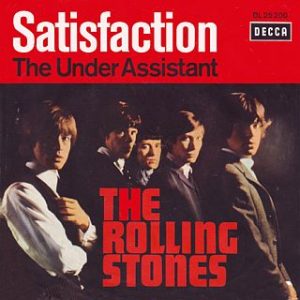
"(I Can't Get No) Satisfaction," released during the summer of 1965, put The Rolling Stones on the international rock and roll map for good. It went to Number One all over the world, and became the earliest of their signature songs. They followed it up with an almost equally impressive "Get Off of My Cloud" later that year.
Most of The Stones' recordings during 1963 - 65 were blues or blues-based rock. However, they took a progressive leap forward in 1966, with the release of Aftermath, their first album to contain no cover tunes. This could be considered to be both The Rolling Stones' answer to Rubber Soul and a precursor to Revolver. As The Beatles had done the previous year, The Stones began to experiment with more exotic instrumentation, including the use of the sitar and dulcimer. Every song on Side One of the LP, with one exception ("Doncha Bother Me"), was an absolute gem; "Paint It Black," "Stupid Girl," "Under My Thumb," and the incredibly beautiful "Lady Jane" rank amongst their best songs ever. Unfortunately, Side Two mostly sucked (with the exception of "Flight 505"). Had the album been more consistent, it would have been every bit as good as Rubber Soul.
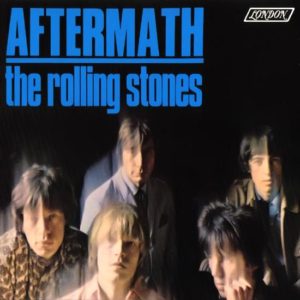
Shrinks had long before defined the "Madonna-Whore Complex" as a way of looking at women as either saints who are pure of heart or total sluts. The Rolling Stones bought into this bigly, as some of the songs on Aftermath amply demonstrate. "Stupid Girl" is as vicious a put-down of women as has ever been put to vinyl. "Under My Thumb" has Mick and the Boys bragging about how they had brought a formerly "uppity" woman under their control, keeping her in line. On the other hand, "Lady Jane" is the most beautiful song The Stones ever recorded. It takes a tone that is diametrically opposed to the other two songs previously mentioned, as it puts the woman in the song on a pedestal, showcasing her as almost worthy of being worshipped. This song is deemed by me to be the official Rolling Stones song of The Skinner Zone.
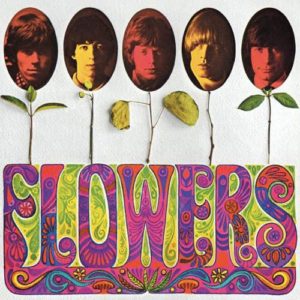
As had been the case with The Beatles (and pretty much with all British Invasion artists of the mid 1960s), The Rolling Stones had their U.K. albums "butchered" by their American record label (London). This included Aftermath; whereas the American version of the album opened with the great song "Paint It Black," this song was released in England only as a single. Its absence from the U.K. version of Aftermath is the main reason that, unlike The Beatles, I prefer the Stones' U.S. albums. Flowers is a U.S. release for which there is no U.K. counterpart, much like Yesterday...and Today, only without the controversial cover. It is a great album that was cobbled together with various singles and tracks from various U.K. albums. In my opinion, it ranks as one of their best, featuring great tracks like "Ruby Tuesday," "Let's Spend the Night Together," "Have You Seen Your Mother, Baby, Standing in the Shadow," and "Mother's Little Helper." I would say that it is a strong contender for being the greatest "butcher" album ever released.
It was around this time that Ed Sullivan allowed The Rolling Stones to perform on his show. He stipulated that when they played "Let's Spend the Night Together" they change the lyrics to "let's spend some time together." In one of The Stones' rare acts of capitulation to The Man, they acquiesced (unlike The Doors, who not only refused to remove the offending phrase "Girl, we couldn't get much higher," but emphasized it when they performed "Light My Fire" on his show).
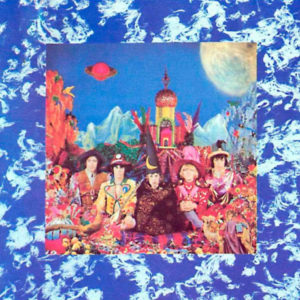
1967 saw The Rolling Stones follow The Beatles into full-on acid rock with the release of Their Satanic Majesties' Request. As had been the case with The Beatles' Sgt. Pepper's Lonely Hearts Club Band, this was The Stones' first album to be released with the same track listing in the U.K. and the U.S. It features such classics as "Citadel," "In Another Land," "She's a Rainbow," and "2000 Light Years From Home." It did not, however, feature any tracks that betrayed even the slightest hint of Music Hall influence.
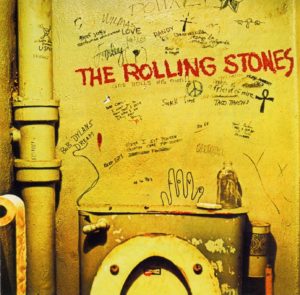
Once again paralleling The Beatles, Mick and the Boys returned to their roots in 1968. They had begun their career as a blues rock band, and they abandoned acid rock and returned to that format. Beggars' Banquet, their 1968 album, featured two great songs, "Street Fighting Man" (a rare foray into politics) and "Sympathy for the Devil," a recitation of two thousand years of historical atrocities. The rest of the album is quite mediocre at best in comparison to their peak period of 1966 - 67. The album originally was designed to be released with a cover that showed a toilet and a graffiti-covered bathroom wall. However, it was rejected by both their American and British labels. This was rather odd because, in 1966, The Mamas and The Papas' debut album, If You Can Believe Your Eyes and Ears, had initially been released with a cover showing the band crammed into a bathtub, with the toilet next to it in plain view. Beggar's Banquet was released with a plain white cover showing only the name of the band and album. Unlike The Beatles' "White Album," copies did not include a serial number on the cover.
It was during the recording sessions for Beggar's Banquet that Brian Jones began having problems. His heavy drug use was interfering with his contributions to the band, which were becoming intermittent. Finally, in June, 1969, he was given the "Pete Best Treatment," and thrown out of the band. On July 3 he was found in his swimming pool, having drowned there under mysterious circumstances.
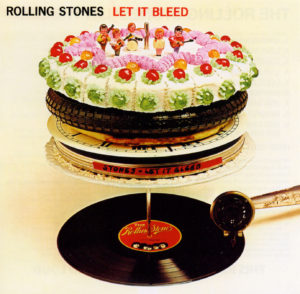
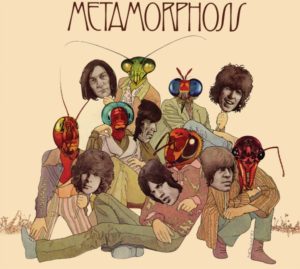
Let It Bleed, their last album of original material of the 1960s, was released on December 5, 1969. As had been the case with its predecessor, it was blues-based; thus, it featured a handful of good songs and a lot of crap. Standout tracks include "Gimme Shelter" and "You Can't Always Get What You Want." Two compilation albums of material recorded during their Decca period were also released. Through the Past, Darkly, was a "greatest hits" compilation that contained three non-album singles, "Jumpin' Jack Flash," "Honky Tonk Women," and "Dandelion," all of which are great songs. Metamorphosis, released in 1975, consisted of studio outtakes and alternate versions of songs that were recorded between 1964 and 1970. Standout tracks are "Each and Everyday of the Year," "(Walkin' Thru the) Sleepy City," and "I'd Much Rather Be With the Boys." The latter song was yet another of The Rolling Stones' trademark put-down of women. The album also includes alternate versions of "Out of Time" and "Heart of Stone."
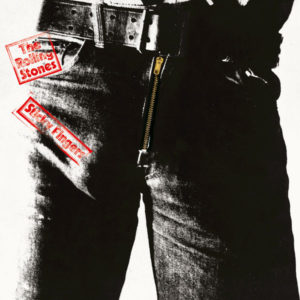
In 1971, The Rolling Stones created their own record label, which was named after the band. It was at this time that they introduced their trademark logo, a pair of ruby red lips with a tongue sticking out. They released Sticky Fingers, perhaps their last consistently great album ever. It contained the classic songs "Brown Sugar" and "Bitch," along with such great tracks as "Sway," "Wild Horses," "Dead Flowers," and many others. This album contained mostly rock numbers, with some blues thrown in, a format that they would stick with until 2016, when they released Blue & Lonesome, a collection of covers of old blues songs.
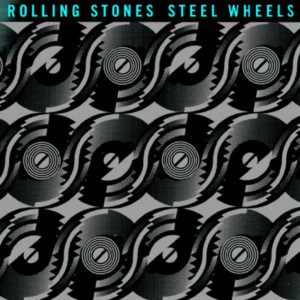
Albums released by The Rolling Stones after Sticky Fingers typically included at least one great song, more commonly two or more, mixed in with a lot of lesser material. The closest they came to releasing another great album came in 1989, with Steel Wheels. Half the songs on this album were at least good, with "Mixed Emotions," "Almost Hear You Sigh," and "Continental Drift" being standouts.
From the 1970s and well into the twenty-first century, The Rolling Stones continued to tour, and to release albums. They almost broke up in the late 1980s when Mick Jagger and Keith Richards began to squabble. Unlike John Lennon and Paul McCartney, however, they managed to settle their differences, and they continued on as a band. Despite a slew of geriatric jokes (as long ago as 1989, one comedian suggested that their tour be dubbed "The Steel Wheelchairs Tour), they have shown no signs of slowing down. As of this time (August, 2017), they are slated to release a new album later this year. Despite rumors to the contrary, none of the members of the band actually died, only to be replaced by an android developed by MI-6.
The Rolling Stones have had the second longest career in the history of rock and roll. They are surpassed only by The Beach Boys, who released their first single and album several months before The Stones got together. It is said that Mick Jagger is still pissed off to this day at having been trumped by a bunch of surf bums from California. The Stones have certainly had a huge impact on music, helping to make the Sixties the incredible decade that it was. After settling down with their signature sound in the early 1970s, they continued to perform and record, and are still going strong to this day. They may not be the world's greatest rock and roll band, but they are definitely up there.
